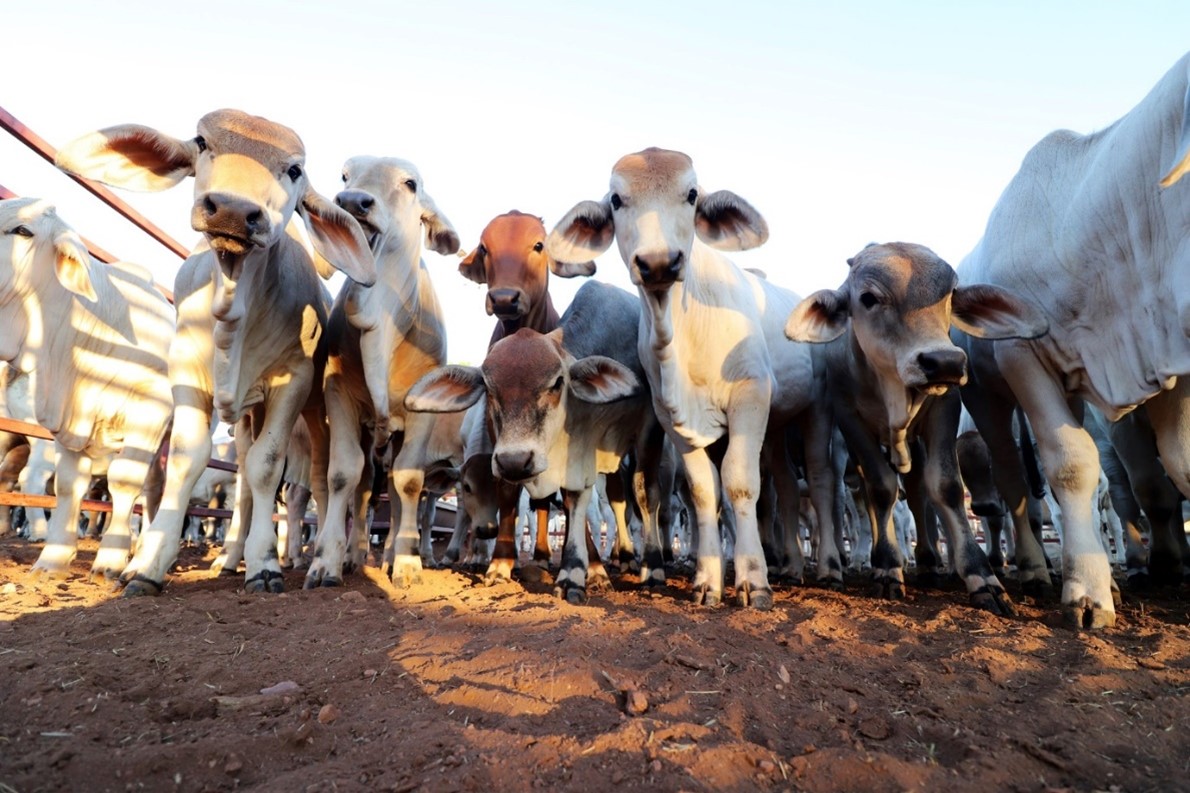Pain relief during castration and dehorning project
Trial Overview
Surgical husbandry procedures such as castration and dehorning on beef cattle is sometimes necessary. Practically and effectively managing animal welfare and pain associated with these procedures is critical, and has sparked significant public interest in recent years. Several bovine pain relief products are now commercially available to producers and have been increasingly adopted by industry. Despite this, further information on how to effectively integrate their application in extensive beef production systems and quantifying the resulting benefit is needed to support increased understanding and adoption.
The Northern Territory Department of Industry, Tourism and Trade (DITT), in collaboration with Queensland Department of Agriculture and Fisheries (DAF), and the Western Australian Department of Primary Industries and Regional Development (DPIRD) trialled the use of pain relief on commercial properties across northern Australia from 2020-2022, totalling 16 different herds and over 4000 calves. Funded by Meat and Livestock Australia, this project evaluated the effectiveness and long-term production associated with providing pain relief around the time of castration and dehorning in young cattle at their first muster, while facilitating increased knowledge and skills for implementing best-practice techniques.
The project monitored livestock performance for around a month following castration and/or dehorning. This was monitored through:
- Recording liveweight change over this time
- Evaluating wound healing and infection
- Monitoring behaviours through a combination of GPS collars and accelerometer ear tags and
- Visual monitoring of behaviour in the yards in the hours immediately following the procedures
All trial animals were handled under standard commercial conditions at the time of castration and dehorning for each respective property, which may have also included branding, vaccination, ear tagging/marking and weaning. This was important to maintain the ‘real world’ aspect of this trial.

The two currently commercially available pain relief products Trisolfen® and meloxicam (Metacam® injectable) were trialled in this project, through four treatment groups in which calves were randomly allocated;
- Control (no pain relief – current industry standard)
- Trisolfen®
- Meloxicam® (injectable)
- Trisolfen® and Meloxicam®
Results
While final data analyses are still in progress, there currently appears to be no observable liveweight benefit in the month following provision of pain relief during castration and dehorning. Despite these results, in the time following castration and dehorning, many animals experience a period of weight loss. Providing good nutrition during this time is very important, to prevent your weaners going backwards at any point. Good nutrition is also important to ensure wounds heal as quickly as possible. If animals are not receiving good nutrition, wound healing may be delayed, which can also increase the rate of infections. Wound infections (both castration and dehorning) were monitored during this study, and the occurrence of a wound infection had a negative impact on liveweight. Infection rates have not been reported in many research studies to date, so documenting in this study was very important to increase our knowledge in this area. Across all sites castration wound infections were seen at a rate of 12% and dehorning wound infections were also seen in 12% of animals – although in the case of dehorning, infection was higher in animals with an exposed sinus than those without. While infections generally resolve naturally and do not require further intervention with antibiotics (if infections persist or become severe intervention may be required), the impact they had on liveweight was apparent. This demonstrated the importance of trying to reduce infections through disinfecting equipment, reducing dust and other contaminants in the yards and timing weaning to avoid weather events such as rain. For dehorning wounds in particular, trying to reduce the instance of exposed sinuse wounds will also reduce the occurrence of infections and improve liveweight production as a result. In addition to wound infection, wound healing was also monitored. It was discovered that dehorning wounds can take more than 2 months to fully heal, while castration wounds heal much quicker, generally being fully healed in after 1 month.
Behaviour was also monitored as part of this study, where the impact of castration and dehorning was evident in the increase in discomfort behaviours such as restlessness, head shaking and tail shaking. Final analyses are still being undertaken on this data, so the results can’t be reported yet.
Take Home Messages
The take home messages from this study are that castration and dehorning do have an impact on liveweight and animal performance and behaviour in the time following these procedures. Trying to reduce this impact by providing good nutrition, minimising wound infections through aseptic technique and management and providing pain relief to help reduce the discomfort caused by these procedures is important. A final update will be provided once all data has been analysed.
More information
If you would like some more information, please contact Melissa Wooderson (DITT Katherine) on (08) 8973 8476 or email: melissa.wooderson@nt.gov.au
Download a copy of A guide to best practice husbandry in beef cattle: Branding, castrating and dehorning – 2nd edition (PDF, 6.65MB)